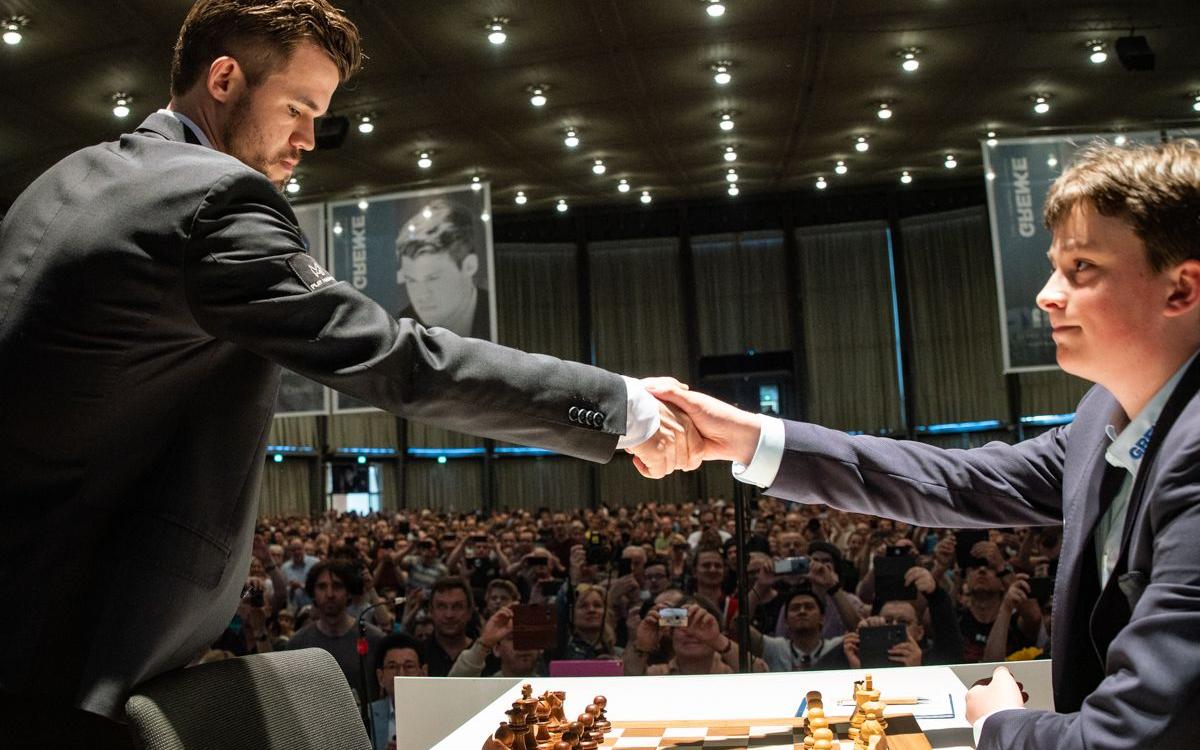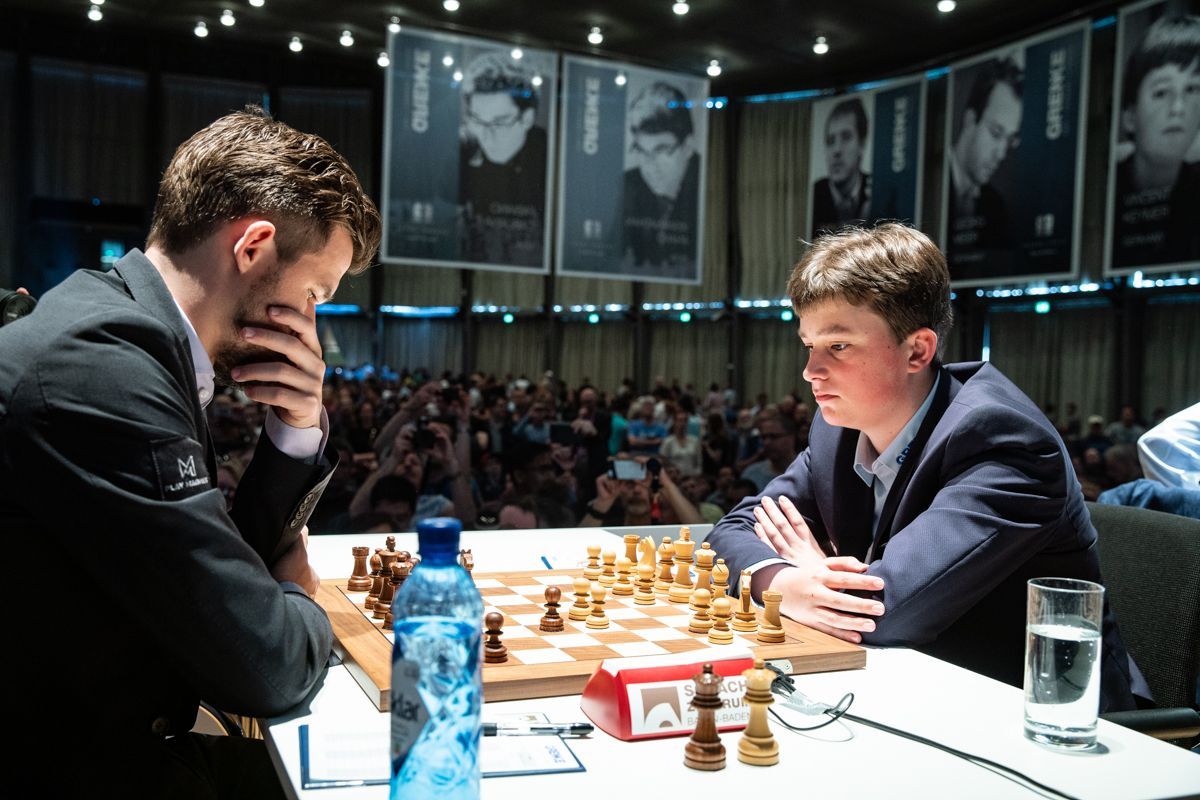
The Chess Prodigy vs Magnus Carlsen
The recent Grenke chess tournament turned out to be a one-person show, since everyone was watching and talking about Magnus Carlsen.
The world champion's game against a young prodigy, Vincent Keymer, was especially intriguing.
While the result of the game was expected, Keymer gave Magnus Carlsen a very decent fight. The Times titled its report of the game: "Vincent Keymer, 14, gives chess great Magnus Carlsen a scare."
In one of my recent articles, I looked at modern games from the standpoint of related classical games. I'll do the same with the game Keymer-Carlsen.

Over 60 years ago, Tigran Petrosian introduced a very interesting strategic idea in his game vs Bronstein:
While many chess fans hate these kind of games (uneventful draws), professionals took notice.
Indeed, Petrosian's novel idea is very interesting. By giving up the pride of his position, the bishop on g7, Black ruins White's queenside, so White cannot attack there anymore. Considering that the center is closed, it means that all the fight will happen on the kingside, where Black has an open g-file and a potential attack against White's king.
After this brief analysis it becomes clear that White should try to break Black's kingside with a g2-g4 push. That's exactly what Bronstein tried to do, but Petrosian managed to prevent it, and in the final position of the game neither side can break the balance.
In the following game, Petrosian's opponent tried to play g2-g4 right away without any preparation, but it didn't create any problems for Black either:
Petrosian's idea, Bxc3, became so popular that another world champion, Boris Spassky, played it in a similar position:
For Petrosian, who was famous for his prophylactic skills, the trade Bxc3 was a tool to restrict White's play. For Mikhail Tal it was a preparation for an attack. Judge for yourself:
Now you can understand what I thought when I saw the beginning of the game Keymer vs Carlsen:
My thoughts: "Poor boy—he is fighting against Petrosian, Tal, Spassky and Carlsen! Now Magnus will just squeeze him."
The reality was different though, as Keymer had a clear advantage at some point. So what happened? White managed to play g2-g4-g5 and gained some serious space on the kingside. The critical position arose after 29 moves.
Keymer was criticized for his hasty 30. g6 move, and rightfully so!
So, did Vincent Keymer refute Petrosian's idea Bxc3? I don't think so. Let's take a look at Tal's game. Immediately after the Bxc3 trade, Tal did everything to prevent the g4 break: Ndf6 and Kh8!, followed by Rg8. Timman never had a chance to play g4.
Let's check it:
Now you see that it is actually Magnus Carlsen who played imprecisely. For example, 15...Kh8 (like Tal) instead of 15...Ng7 looks more to the point.
I hope this episode helps you to better understand this kind of position. While Magnus Carlsen is one of the best players in chess history, the previous world champions also knew a thing or two about chess.






